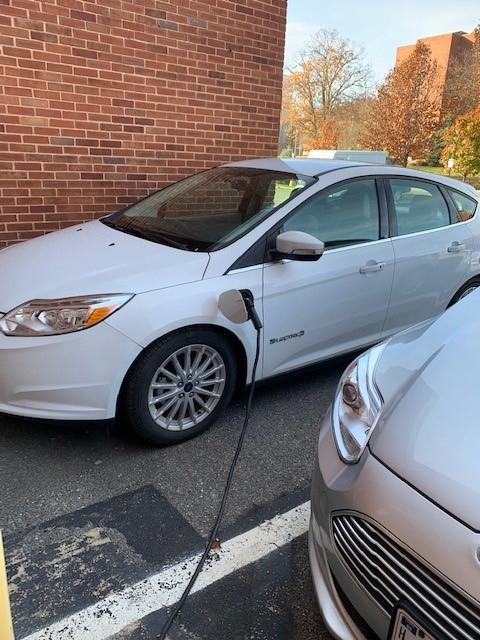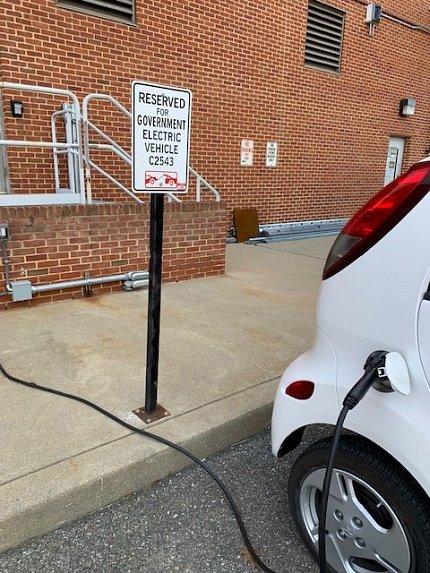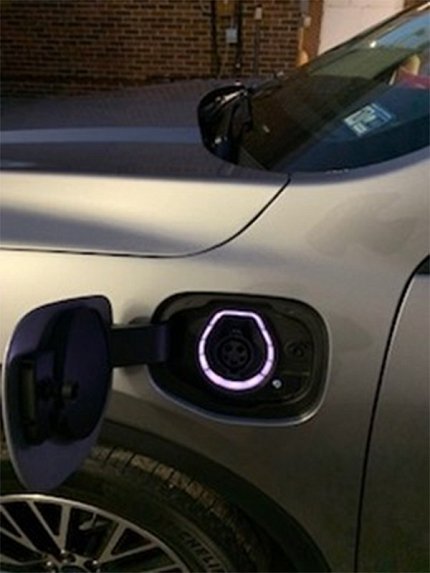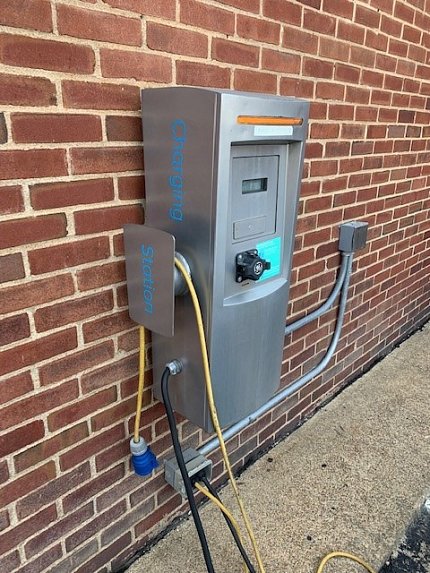Going Greener
NIH Begins Conversion to Zero-Emissions Fleet

NIH has begun the transition to a zero-emissions vehicle fleet, as required by an executive order. The transition must be completed in the next 5 years.
In December 2021, President Joe Biden signed Executive Order 14057, “Catalyzing Clean Energy Industries and Jobs Through Federal Sustainability.” The order requires that all federal vehicle acquisitions be electric or zero-emissions vehicles by 2027. Plug-in hybrid models meet these requirements.

NIH owns more than 350 vehicles, said Mark Minnick, chief of the Transportation Management Branch. His branch is responsible for ordering, maintaining and surplussing them. Most federal agencies lease their vehicles from the General Services Administration. However, NIH owns its fleet.
“All institutes and centers have to buy vehicles through the branch,” he said. “We make sure that each purchase meets the requirements of executive orders.”
To satisfy the requirement, Minnick said that 20 percent of acquisitions must be zero-emissions vehicles in 2022 and 30 percent of acquisitions must meet the same criteria in 2023. Vehicles that NIH already owns do not have to meet these percentages. This year, 77 percent of vehicles met the criteria, so “we’re ahead of the game.”

The NIH Police Department has already begun the transition to a zero-emission fleet, said Lt. Brian Sims, the fleet’s coordinator. This year, they purchased several plug-in hybrid Ford Explorers. They’ll continue to add zero-emissions vehicles to replace older cars that age out of service.
“I’ve been an officer since 2003, so I’ve seen the condition of some of the cars,” he said. “We can put our officers in better vehicles and better conditions.”
Sims began researching electric models before the executive order. He observed the changing world and saw that automakers were transitioning to electric vehicles. So he wanted to move in that direction.
He found other police departments around the country had been testing Tesla and Ford electric vehicles. Sims reached out to those departments to learn more about their experiences with electric models. They gave him recommendations and provided cost-benefit analyses.
At the time, he opted against purchasing the electric vehicles because the infrastructure isn’t on campus yet to charge every police vehicle. Additionally, the cars need to be parked in a garage to keep their electronics in optimal condition.

Even though Sims went in a different direction, the experience researching zero-emission models prepared him to comply with the executive order. He now knows how much electric vehicles will cost and which ones qualify as environmentally responsible.
“We’re going to continue in the green direction, as best as we can,” Sims said. “We plan to order more vehicles and we’ll be getting hybrids. We’re done ordering gas cars.”
Meeting the order’s requirements has been one of the toughest challenges Minnick faced in his almost 34 years at NIH. For more than 20 years, all NIH vehicle acquisitions have been alternative-fuel vehicles. That’s changed overnight, he noted.

Right now, NIH can’t go with a fully electric fleet. There aren’t enough stations for employees who need to keep cars in rotation 24 hours a day. However, charging stations are being installed around campus as new buildings are constructed, Minnick said.
“The biggest problem right now is options,” he said. “Dealers are selling a lot of SUVs and sedans but pick-up trucks make up a majority of our fleets.”
There aren’t many pick ups that meet the order’s requirements. The few that exist cost a lot of money. He advised institutes and centers who must purchase electric vehicles to hold off on buying trucks until there are more options to reduce the cost.
By 2027, Minnick anticipates there will be a bigger selection of electric models to consider. Ford, Chevrolet and Chrysler are investing in electric vehicle production.
“Hopefully the technology will get better and better, but it’s a huge challenge,” he concluded.
